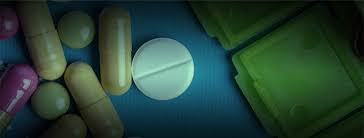
- +86-13363869198
- weimiaohb@126.com

Nov . 02, 2024 02:59 Back to list
lidocaine hydrochloride cas 73-78-9
Lidocaine Hydrochloride An Overview
Lidocaine hydrochloride, with the chemical formula C14H22N2O·HCl and CAS number 73-78-9, is a local anesthetic widely used in medical practice. It belongs to the class of aminoamide anesthetics and is recognized for its fast-acting analgesic properties. Lidocaine hydrochloride has gained significant popularity in various fields of medicine, including dentistry, surgery, and pain management, due to its effectiveness and safety profile.
Chemical Properties and Mechanism of Action
As a local anesthetic, lidocaine works by blocking sodium channels on neuronal cell membranes. This action inhibits the propagation of nerve impulses, effectively numbing the area where it is administered. Lidocaine hydrochloride is characterized by its rapid onset of action, usually within minutes of injection, and a duration of effect that can last from one to three hours, depending on the dosage and route of administration.
The compound is typically available in various formulations, including injectable solutions, topical gels, and patches. The choice of formulation depends on the intended use — whether for minor skin procedures, dental work, or more extensive surgical interventions.
Clinical Applications
In clinical settings, lidocaine hydrochloride is employed for a variety of procedures
. In dental practice, it is often the anesthetic of choice for tooth extractions, fillings, and other oral surgeries. Its localized effect minimizes discomfort and allows patients to undergo procedures with reduced anxiety.lidocaine hydrochloride cas 73-78-9

In surgical environments, lidocaine is utilized for nerve blocks and epidural anesthesia. Surgeons appreciate its efficacy in providing pain relief while allowing patients to remain conscious during less invasive procedures. Its use extends to treating conditions such as cardiac arrhythmias, where it stabilizes cardiac membranes and reduces excitability, thereby preventing tachycardia.
Beyond these applications, lidocaine hydrochloride is also used in treating certain types of pain, such as postherpetic neuralgia, where topical formulations can provide surface analgesia to affected areas.
Safety and Side Effects
Like any medication, lidocaine hydrochloride is not without risks. Common side effects may include temporary irritation at the injection site, dizziness, and drowsiness. More serious adverse effects can include allergic reactions and central nervous system disturbances, particularly when administered inappropriately or at excessive doses.
Due to its potential to cause toxicity, especially in patients with pre-existing conditions affecting liver function or those taking other interacting medications, it is essential for healthcare providers to assess patient history prior to administration.
Conclusion
Lidocaine hydrochloride remains a cornerstone in modern anesthetic practice due to its rapid onset, effectiveness, and wide range of applications. When used judiciously, it offers considerable benefits in alleviating pain and enhancing patient comfort during medical procedures. Ongoing research continues to explore its potential in various therapeutic applications, ensuring that lidocaine hydrochloride will remain a vital tool in both acute and chronic pain management for years to come. As with all medications, understanding its properties, applications, and safety profile is crucial for healthcare professionals to maximize its benefits while minimizing risks for patients.
-
Pharmaceutical Intermediates - AI-Optimized Synthesis & Purity
NewsJul.31,2025
-
Top CAS: 79099-07-3 Factories & Wholesale Supplier from China
NewsJul.30,2025
-
High-Quality GS-441524 for White Liquid Type Factories & Suppliers
NewsJul.29,2025
-
High-Quality Pharmaceutical Intermediates for Sale – Reliable Supply
NewsJul.29,2025
-
High-Quality Pharmaceutical Intermediates for Sale - Reliable Solutions
NewsJul.29,2025
-
High-Quality Pharmaceutical Intermediates Supplier for Global Market
NewsJul.28,2025